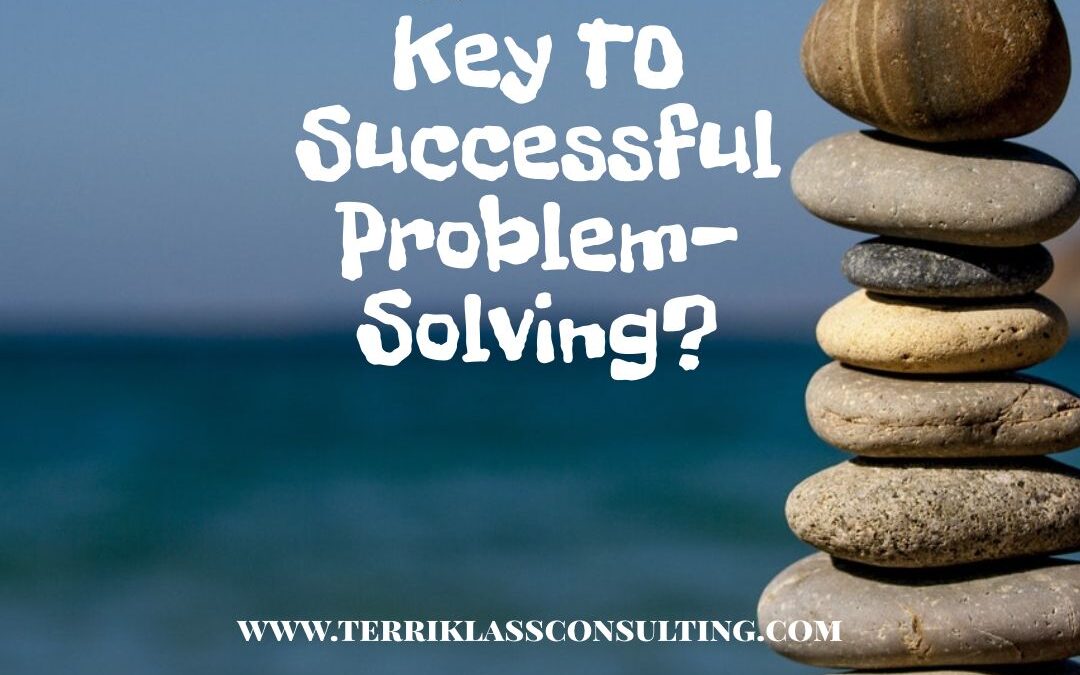Partnering with a team recently to find a solution to a complicated challenge was no simple task. At first, it seemed that there was an obvious resolution but as with most complex problems, there was way more involved. Different perspectives and suggestions were proposed with heated discussions. The disagreements kept growing and before we knew it, we hit a dead end. To sum it up, there appeared no way out of our mess. Some of the comments that were shared were:
“I think you’re totally off-base with your thinking.”
“I am taking all of my emotions out of this decision.”
“You’re asking for more trouble going down that road.”
“I just don’t see any way to solve this problem.”
Although teams continually face glitches that can often require a great deal of unpacking, the way they approach problem solving is key to a meaningful outcome. There are definitely best practices that teams can use to tackle their problems straight on which will result in solutions that all team members can live with.
Six leadership strategies to problem-solve:
1. Define The Real Problem
In order to end up with the most impactful solution to a challenge teams must clearly identify the real issue at hand. Even though this may seem like common sense, it doesn’t always play out that way. For example, if a team decides the problem with a deliverable is due to delayed work being shared but the problem is actually the process being used then the solution will never resolve the issue. Some helpful questions to ask to get to the real problem might include:
- Why is this a problem?
- Who does this problem impact?
- What isn’t the problem?
- What are the different elements of the problem?
2. Brainstorm A List Of Possible Solutions
Once defined and written out in a statement, it is time for a team to attempt to identify possible solutions. The most effective way to begin this process is by brainstorming. What is brainstorming? Simply put: Throwing out as many ideas as possible without using any judgement or discounting any. For some team members this can be difficult if they are unable to refrain from sharing their comments. This step is all about quantity, not quality.
3. Include All Stakeholders
During this process of brainstorming, it is essential to include all the team members so that everyone feels buy-in with the end result. This is essential because when people see themselves as part of the problem-solving process they will keep sharing their important ideas. How do you include all team members?
- Ask each team member about their thoughts of how they would go about resolving the issue. Help them to keep their emotions at bay.
- Validate suggestions and opinions being shared.
- Think about stakeholders who may not be part of the team but may be helpful in resolving the issue. Their insights may lead to a more inclusive solution.
4. Weigh The Pros And Cons Of The Solutions
When all solutions are on the table and all the stakeholders consulted, then it is time to analyze the solutions. It is at this point that a back and forth discussion of the positives and negatives of each solution be considered. In my case, some of the possible solutions could possibly lead to further challenges. Just take the time to look at all sides of each possible outcome. Be honest with one another and also openminded to different alternatives.
When weighing different solutions to a problem, staying open as well as realistic is key. Share on X5. Clearly Identify The Best Outcome
Once the evaluation of all the solutions is complete, choose the best one and go with it. That means making sure to be clear on the decision and what that might entail for the rest of the team and organization. A professional report should be designed that includes:
- The clearly defined problem.
- The stakeholders involved in the solution reached.
- The process undertaken to arrive at the decision.
- Concise and purposeful stated solution to the problem.
6. Present The Solution With Intent
Finally, choose which stakeholders should share the solution. Those team members should carefully prepare an impactful presentation that maps out how the problem was resolved and why that alternative was selected. When we present our solution it should be with conviction and clarity. Not always easy but well worth the time to gain as much support as possible.
What additional problem-solving strategies have worked for you and your team?


Great article, Terri. I love all of your points but the one that resonated with me the most was “define the real problem.” I’ve been in many situations where too much energy was spent finding a solution to a problem that no one had taken the time to define with clarity. Sure, we came up with stop-gap measures but since the real problem hadn’t been addressed, they were nothing more than bandaids that wasted leadership’s valuable time.
To solve a problem and reach the best solution teams must have total clarity on defining the problem accurately. There are many techniques to drilling down to the real problem. Sometimes it is important to understand what isn’t the problem in order to have a clearer vision of what the problem doesn’t impact. Rewriting the problem in different ways can also be so helpful in reaching the best definition.
Thanks LaRae!